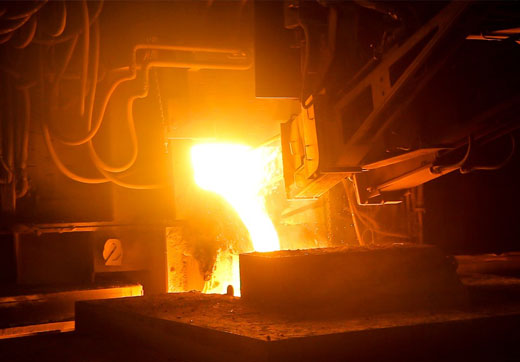
Vacuum Furnace -- Really?
According to Aristotle, nature abhors a vacuum, but we at Semco, and the graphite components we manufacture, especially the ones used in furnaces, love vacuums. What graphite abhors is oxidation, something that occurs in vacuum furnaces when the vacuum is not maintained and oxygen-rich air rushes in. And while flawed material resulting from problems during graphite production may be the first explanation when someone notices deteriorating graphite materials in their vacuum furnaces, what we have learned through investigation is that simple fixes to the vacuum seal of a furnace can save the graphite, and the furnace’s owner, much grief. Let us explain.
One of the most common graphite applications is the material’s use in vacuum furnaces as fixtures (component parts of the furnace) or as tooling (carriers for the product to be heat treated). A graphite solution is ideal in these furnaces because of the material’s special ability to hold up well in high temperature environments (up to 3000 deg. celsius) with inert gas atmospheres. However, if oxygen, (not an inert gas -- it is in fact highly reactive) is present in the furnace atmosphere, the graphite therein can oxidize at temperatures as low as 650-700F. Because graphite is porous, the oxygen can penetrate beyond the surface of the material. This process can lead to the oxidation and, thus, the degradation of the graphite over time.
The issue of oxidation of graphite components in vacuum furnaces came to our attention during a recent conversation with one of our customers who described an experience with graphite posts, components that we manufacture. A graphite post is an element of the hot zone in furnaces. The customer complained that elements were oxidizing regularly, even after a few uses. This observation intrigued us since we have not had any other complaints like that about our graphite posts. Wanting to help our client get to the bottom of this problem, we decided to investigate. The first thing we did was to ask for photos of the furnace that clearly indicated the location of the posts within the furnace. We were not surprised to observe that not all posts in the furnace oxidized, but only a select few, and in the same location. Our suspicion that the issue was not with the graphite but with the furnace itself was confirmed on a follow-up visit to the customer. The culprit turned out to be a furnace door with a defective gasket that was worn in one spot. This worn gasket, whose purpose is to seal the furnace off from the outside air, was allowing a directional stream of oxygen-rich air from outside to make its way inside. The two posts in the path of this stream were constantly oxidized due to their contact with the oxygen at about 2400 deg. Celsius.
A secondary issue that we noticed during our inspection was that a furnace operator opened the door to an adjacent furnace which was still well above 700 deg F, a temperature at which graphite oxidizes. The door was opened in order to cool the furnace faster. Large fans were then placed at the open door in an attempt to speed the cooling of the furnace. While this was all done to increase productivity, the attempts to cool the furnace had a serious unintended consequence -- graphite oxidation. Although the deterioration of the graphite was not as evident in this case, it was definitely happening, and the result was a faster than normal degradation of the graphite.
It is certainly possible for graphite to act in unpredictable ways. That is why we take great care to inspect all of our graphite to ensure the material we machine is the result of the highest quality graphite production. When the degradation of graphite components occurs in furnaces, it is rarely the graphite itself and more likely that the processes applied to the graphite that are creating the issue. Our simple solution for problems with graphite applications related to furnaces: if a furnace is a “vacuum furnace,” it should truly operate in a vacuum environment.
